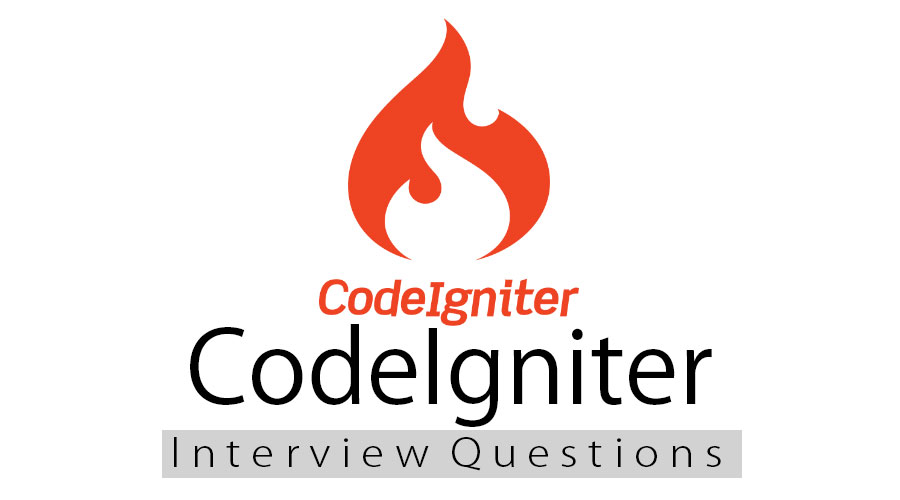Top CodeIgniter Interview Questions for experienced
A list of top frequently asked CodeIgniter interview questions and answers are given below.
1) What is CodeIgniter?
CodeIgniter is an open source and powerful framework used for developing web applications on PHP. It is loosely based on MVC pattern and similar to Cake PHP. CodeIgniter contains libraries, simple interface and logical structure to access these libraries, plug-ins, helpers and some other resources which solve the complex functions of PHP more easily maintaining high performance. It simplifies the PHP code and brings out a fully interactive, dynamic website at a much shorter time.
2) What are the most prominent features of CodeIgniter?
A list of most prominent features of CodeIgniter:
It is an open source framework and free to use.
It is extremely light weighted.
It is based on the Model View Controller (MVC) pattern.
It has full featured database classes and support for several platforms.
It is extensible. You can easily extend the system by using your libraries, helpers.
Excellent documentation.
3) Explain the folder structure of CodeIgniter.
If you download and unzip CodeIgniter, you get the following file structure/folder structure:
Application
cache
Config
Controllers
core
errors
helpers
hooks
language
libraries
logs
models
third-party
views
system
core
database
fonts
helpers
language
libraries
4) Explain CodeIgniter architecture.
From a technical point of view, CodeIgniter is dynamically instantiation (light-weighted), loosely coupled (components rely very less on each other) and has a component singularity (each class and functions are narrowly focused towards their purpose).
5) Explain MVC in CodeIgniter.
CodeIgniter framework is based on MVC pattern. MVC is a software that gives you a separate logical view from the presentation view. Due to this, a web page contains minimal scripting.
Model – The Controller manages models. It represents your data structure. Model classes contain functions through which you can insert, retrieve or update information in your database.
View – View is the information that is presented in front of users. It can be a web page or parts the page like header and footer.
Controllers – Controller is the intermediary between models and view to process HTTP request and generates a web page. All the requests received by the controller are passed on to models and view to process the information.

